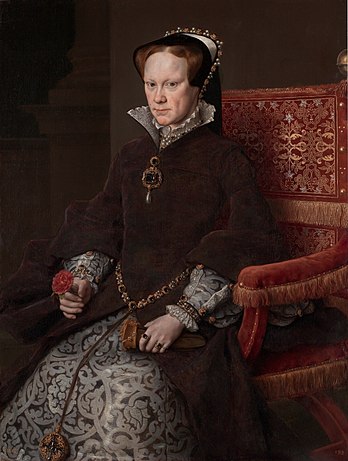Mary Tudor, was the Queen of England from 1553 until her death in 1558. By linage, Mary was the rightful heir to the throne after the death of her half brother, King Edward and her father, King Henry VIII. She was called Bloody Mary because she tried to restore England to Catholicism and had over 300 Protestants executed for heresy.

Mary had many enemies, especially those who had acquired wealth and land from the confiscated Catholic monasteries seized by her father, King Henry VIII. Parliament also opposed her marriage to a foreigner, King Phillip II of Spain. In 1557 Phillip persuaded Mary to commit England to helping him fight against France, which cost England Calais, England’s last possession in France. And the people of England resented paying higher taxes to pay for a war that only helped Spain.
When Mary died in 1558, she was succeeded by her half-sister, Protestant Queen Elizabeth I. So the Counter-Reformation in England came to an end. The Pope excommunicated Elizabeth in 1570 and Catholics rebelled against her. Elizabeth executed as many Catholics as Mary burned Protestants. So why was only Mary cursed with the label “Bloody Mary” when both Henry VIII and Elizabeth I had been just as “bloody”?
In 1563, an English Protestant historian John Foxe published “Foxes Book of Martyrs”. It was widely published, with the invention of the printing press. It was available in every cathedral throughout England. Catholics consider Foxe a significant source of English anti-Catholicism and Protestant propaganda. It was Foxe who dubbed her the “bloody queen”.
For those looking for the Bloody Mary cocktail, go here.